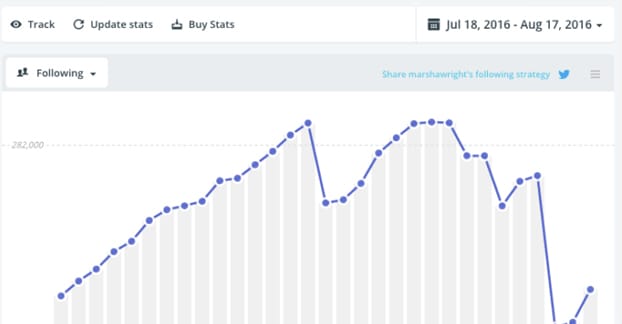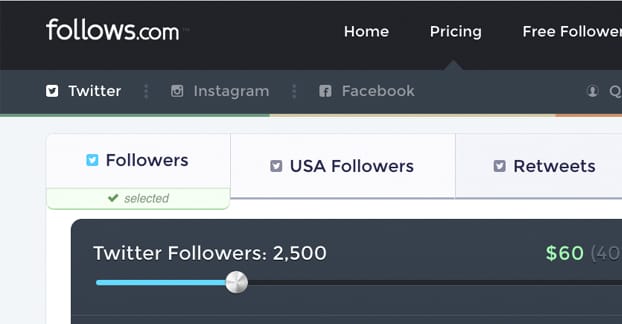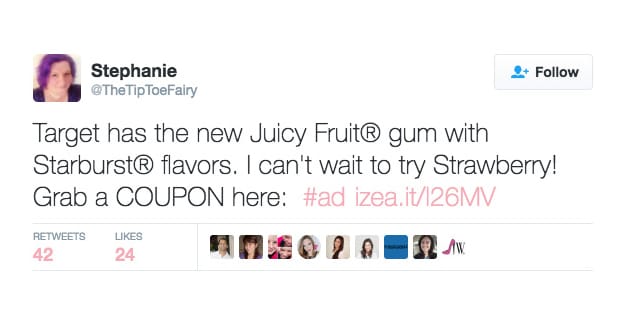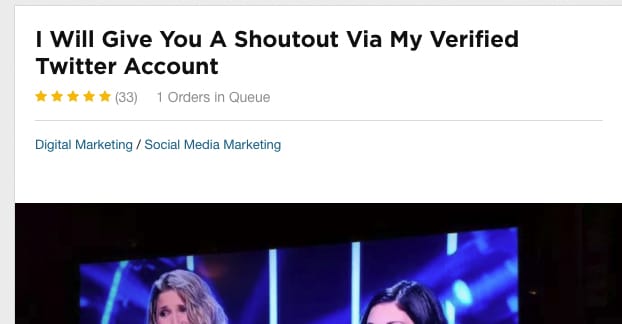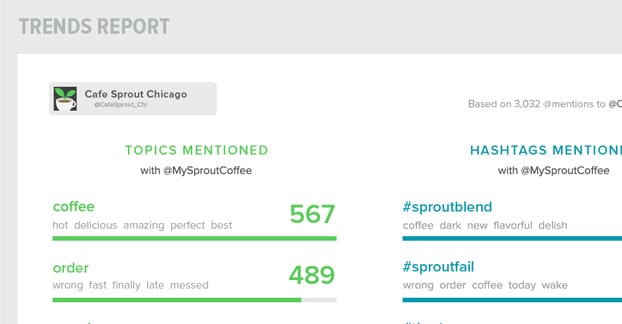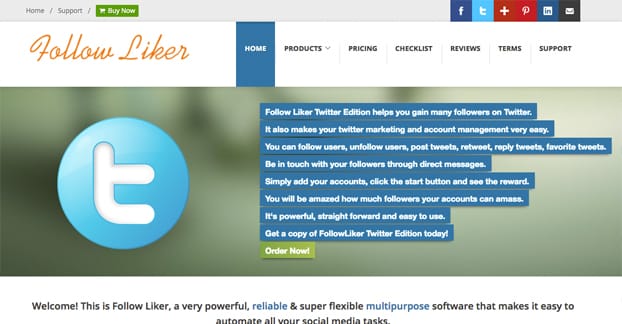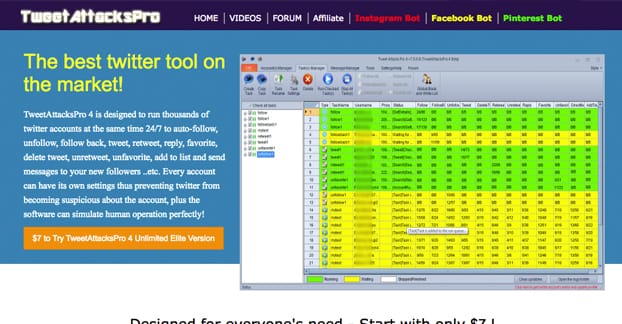Twitter is a platform where having a lot of followers is only half the story. You can have a million followers, but if they’re all fake accounts you made yourself, it doesn’t matter. You’ll just have a terrible engagement rate and your tweets will go nowhere.
The “fastest” way to get Twitter followers is, then, not necessarily the best. In fact, most of the ideal ways to grow a Twitter following involve weeks or months of consistent work.
What follows is a bunch of methods you can use to get as many followers as you can, as quickly as you can. Think of it like a thought experiment. You can do all of this, but it’s not going to leave you in a good position when you’re done. Keep in mind that some of these strategies are against the Twitter terms of use and can get your account suspended as well.
Follow Tons of People
The first option you have is to implement what is generally called the follow/unfollow method, aggressive following, or follower churn. Bots do this all the time, based on various criteria. You, too, can implement it and see where it gets you.
The core concept is simple. Follow anyone and everyone you find. See someone retweeted in your feed? Follow them. See someone in Twitter’s recommended accounts list? Follow them. Type a hashtag into the search bar and check out who happens to be tweeting using that hashtag, and follow all of them. Follow everyone.
Now wait a few days. It’s up to you how long. Some people wait a week, some just wait two or three days. It doesn’t really matter. As long as you’re waiting more than a day or two, you’re waiting long enough for the average user to respond.
Next, go through your list and unfollow everyone you just followed. Unless you really specifically like a given user, just unfollow them. If you want to be slightly less of a dick about it, you can just unfollow the people who didn’t follow you back. It’s really up to you. All of these different actions are variations on the theme, depending on how transparent and how aggressive you want to be.
Now, I should mention that you’re going to have a pretty low success rate with this strategy. The days of follow-back culture being A Thing are long over. Still, some people will follow you, so it’s better than nothing. You can even build a bot to automate this process, or use one of the many bots already developed to do it.
If you want to be a little more precise, by the way, you can choose to follow people with a little bit more discrimination. Only follow people on an entrepreneur list, only follow people using #SEO, only follow people with the first name John; it doesn’t really matter, it just makes the resulting audience a little more focused around your theme.
Follower churn or aggressive following is explicitly against the Twitter terms of service and they have automated processes that will trip and suspend you without human interaction, which is why this technique is not valid except when used very carefully.
Buy Bulk Followers
Your second option for getting a lot of followers very quickly is to buy them. Now, you CAN run ads through Twitter to purchase followers. Getting new followers is an ad objective, after all. Larry Kim wrote an article about it for Marketing Land last year, and his cost for a new follower was about ten cents. That means you can get ten followers per dollar spent. Or you can go to some other sites and get them even cheaper.
Let’s take a look at some of the other sites selling followers for Twitter.
- BuyCheapFollowersFast dot com sells 200 followers for $1, and even has a deal where you can get 8,000 followers for a mere $15. That’s at minimum half the cost of what Twitter ads got Larry up there.
- Devumi sells a thousand followers for $17, which is more expensive than BCFF, but still a pretty low cost for a thousand accounts.
- Twitter Boost will sell you a thousand followers for $12, up to a cap of a quarter million. They even guarantee a year of retention!
- Coin Crack sells a thousand accounts for $9, but has a lower cap of only 50,000. Of course, their gimmick is that they cater to an audience of people with questionable judgment by offering their services for bitcoin.
- Fiverr has a whole range of different sellers, some of which are just using some of the above services at a markup. You can get a few thousand for anywhere from $5 to $30.
Of course, buying bulk followers runs you squarely into the issue of fake followers. Most of these sites either use a clickfarm based in some third world country with a cheap cost of living, or they just run a network of bots like Russia uses to influence news. Either way, you’re not getting real people when you buy from one of these services. If you absolutely want to buy followers, you should either learn how to run Twitter ads or use a reputable service.
Buy Sponsored Shout-Outs
If you want something that can be effective for a few hundred to a few thousand followers at a time, while still looking relatively organic, not breaking any of the Twitter rules, costing a relatively low price, and only slightly violating a few FTC regulations, you can buy a shout-out.
Technically, a sponsored shout-out on social media is supposed to come with an affiliate disclosure. The people involved in a deal for advertising that is not disclosed to be advertising can be subject to citations or fines due to that lack of disclosure. Realistically, does it matter? Probably not, unless you’re doing this a lot.
What you do is find a social media influencer on Twitter with a sufficiently large audience and sufficiently open morals. Approach them and ask them if they’d be willing to give you a shout-out for reasonable compensation.
Alternatively, you can check some marketplaces. Fiverr again steps up to the plate here.
Here are two examples of what you might buy.
- Feefeertr will mention you and place your photo or video on her timeline on Twitter within four days. For $10, you get a shout-out. For $25, she’ll run your photo or video link. For $100, she’ll do that along with advertising on her Instagram. Her account is verified, but she doesn’t say what account it is, so you don’t know how many followers she has.
- Olivah claims to have an audience of over a million followers on his verified account, though as you might expect he also does not reveal what that account is. $10 will give you a retweet. $20 will also give you a retweet, and $50 will get you a retweet. The difference is the number of followers he claims you’ll be retweeted to, which kind of isn’t how Twitter works, but whatever. Maybe he’s using different accounts. Or maybe it doesn’t actually matter.
A shout-out looks more organic at least, and can get you real followers if the person doing the shout-out has real followers themselves. That’s a tall order, of course.
Tweet Using Exploited Keywords
This next option is slower, and a lot more tedious, but it’s possible if you want to do it. Just using Twitter normally, I’m sure you’ve encountered instances where tweeting a certain word or phrase will trigger a few accounts to follow you. Often these are just people using method 1, using software to follow your account because of that keyword. You can follow them back and hope they’ll stick around; often software “rewards” users who follow back by not deleting the follow.
You can of course exploit this by tweeting repeatedly using a list of these keywords. Usually they range through various marketing and SEO keywords, though I know a few other niches are popular as well. For example, my own test account has been followed by churches, by weed blogs, and by people looking to promote books based on writer-based keywords.
Simply experiment. Tweet a lot using variations of these words and phrases, in and out of hashtags. Whenever you get a new follow, follow that person back. You’ll build an audience, and while it’s faster than organic growth, it’s also not necessarily pure bot followers. After all, even if they’re using a bot to grow, they’re probably a real enough account, right?
Use Growth Software
A few times already, I’ve made reference to bots or software that do all of this for you. They’re always an option, of course. There are a bunch of different pieces of Twitter growth software you can use that will do basically everything for you automatically. Some just sit there and follow people based on your criteria, some suggest people for you to follow manually, and some will completely run your Twitter feed for you.
FollowLiker is an example of one of these apps. It will follow users automatically for you, based on topics, languages, locations, lists, or whatever other criteria you want. It will unfollow users who don’t follow you back in a certain time frame. It will post tweets for you, retweet content based on criteria, reply to tweets with engaging-looking replies, like tweets, and so forth. It can even send direct messages if you want to auto-spam everyone who follows you.
If you want to use FollowLiker, you can buy a specific Twitter version or you can buy versions for each of the different social networks they work with. For just one Twitter account, it’s $58 for a one-time fee to buy the software, and then an additional $6 per month ongoing afterwards. Bump up the one-time payment to $78 and you can run five accounts at once. $98 will get you unlimited accounts, if you’re feeling particularly feisty.
TweetAttacksPro is another option, though it’s designed to run thousands of Twitter accounts at once, rather than just running one. Basically, this is the kind of software other people are using when they’re selling you a few thousand followers at a time. Where do you think those followers come from? That seller’s computer, via a thousand different proxies. You can, of course, just set it to create accounts and follow your main account with them to inflate your metrics as much as you want.
It’s more expensive, though. A single account version is $67, the unlimited version is $267, and the one with all the additional automation is $297.
Most of the other main bots, like Mass Planner, have been shut down over the last couple of years. There are a few others, but I’m confident in your ability to find them yourself if you really want to.
Implement Clickjacking
The final strategy on the list is a very much black hat strategy, even more so than all of the rest. It’s against the policies of every social network, it violates a lot of policies on web hosts, and even Google might blacklist your website for using it. It’s technically an implementation of malicious code.
Clickjacking is the act of hijacking a click a user might make and putting it to a different purpose. It’s also known as a UI redress attack.
You put a clickjacking script on your page and wait. When a user comes, the first time they click on your site – like to click a link or to close one of those overlays that are so popular these days – the click seems to do nothing. Generally the second click also does nothing, before the third one finally closes.
The reason those two clicks do “nothing” is because they’re secretly being redirected. Hovering over the top of your site, following the user’s cursor around the screen, is a Twitter follow button. When they click a link or the overlay or whatever, the click is actually going to the Twitter button. The user just can’t see it, because it’s invisible. If the second click does nothing as well, it’s because it’s a confirmation box for the follow.
The primary weaknesses of clickjacking, aside from being immoral and reprehensible, are that Google can detect it and blacklist your website, and that script blockers like NoScript can block it. You can read more about it here.
Obviously, I never recommend doing something that is going to get your account banned or get your website deindexed; the risks far outweigh the benefits. All of the above is simply a thought experiment on the techniques you might exploit, if you wanted to see how bad the repercussions can get.

